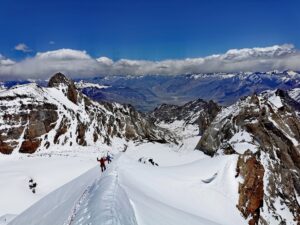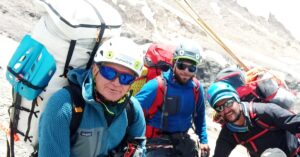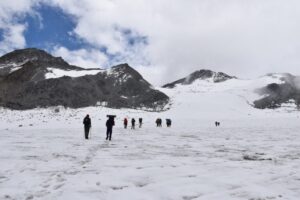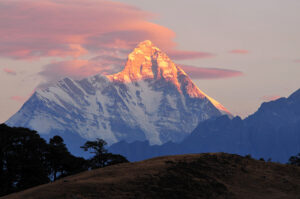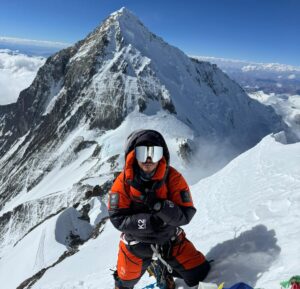On October 22, Toshiyuki Yamada almost bagged the Fastest Known Time on Ama Dablam. The Japanese citizen and Canadian resident climbed the normal Southwest Ridge route in 5 hours 42 minutes. His total time Base Camp-summit-Base Camp was 9 hours, 32 minutes.
Last year, Italian Francois Cazzanelli summited a little faster — 5 hours, 32 minutes, and 6 seconds. He didn’t sprint down but waited for his slower partners and helped in a rescue operation on his way down.
Ama Dablam’s normal route gains 2,300 vertical metres from Base Camp to summit (6,812m) along 15 kilometres. Yamada climbed without oxygen or Sherpa support. However, he noted clearly in his report that he used the fixed ropes.
As usual nowadays with this kind of record, Yamada shared all the details, including a log of all his GPS tracks. Check it on his Instagram page:
“This is what I wanted to do on Manaslu,” Yamada said. “I wanted to practice the FKT experience I had gradually [trained on] in the mountains of Canada on the high peaks of the Himalaya.”
What exactly is an FKT?
We should start by asking, What is the difference between an FKT and a speed climb?

Worldwide FKTs on fastestknowntime.com.
The name has been around for a while, but during the COVID restrictions, it became a trend. With trail-running competitions canceled, athletes used FKTs to challenge themselves against others, without having to compete in company.
Beginning in 2018, they also had a place to register their records. Buzz Burell and Peter Bakwin founded fastestknowntime.com, which has evolved into the sport’s unofficial certifiers, as Runnersworld explained.
The first routes to attract official FKT seekers were North America’s great long-distance routes, such as the Appalachian Trail. It then spread to the UK, where fell runners still prefer the term “speed record”. By now, it has long reached the European Alps and other ranges.
The challenge is simple: An athlete doesn’t need witnesses. But the runner’s chosen route must always be over five miles long and over 500 vertical feet. Most important, the athlete needs a GPS device to track the trip.
Otherwise, anyone can submit the data to register an FKT on the website. There is a gender-based category (male, female, non-binary) and three styles: unsupported, self-supported (supplies cached by the athlete himself, for example), and supported.
Is it for runners, climbers, or both?

Karl Egloff on Makalu last spring. He climbed the mountain in 18 hours and 17 mins.
While FKTs often take place in the mountains, the official log applies to non-competitive hiking or running routes rather than technical climbs.
“Ropes may not be employed for more than 10% of the elapsed time, and doing grades 5.8/5a and harder, even without a rope, is considered climbing, not running or hiking,” the guidelines read.
However, the challenge and its simplicity were too good for sky runners and speed climbers, who often focus on higher peaks rather than technical climbing routes. They simply ignored the “no climbing” limitation.
Kilian Jornet set the Matterhorn’s FKT back in 2013, with a time of 2 hours, 52 minutes, and 2 seconds. Last spring, Nico Miranda and Karl Egloff of Ecuador bagged Makalu’s FKT in 18 hours, 17mins. Again, they used fixing ropes on most of the route up the 8,481m peak. Previously, Egloff applied FKTs to the Seven Summits. Other athletes have set FKTs in kayaking, cycling, etc.
In the end, there is no real difference between an FKT and a speed climb, since the requirements are basically the same. Yet since high-altitude FKTs are not officially recognized on fastestknowntime.com, athletes should add even more information besides GPS tracks. This could include photos or videos, a report about the conditions, and the testimonies of witnesses.

